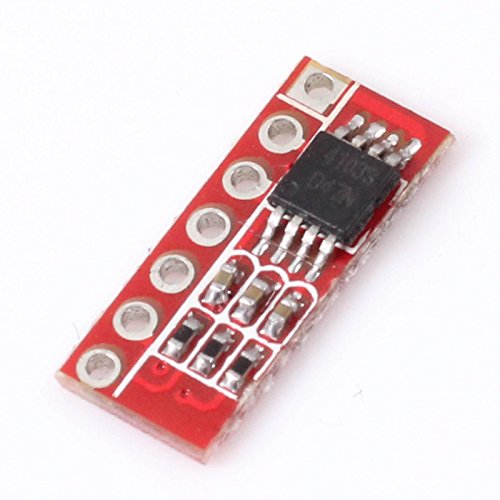Top 5 Class D Amplifier Boards - Intro
This page title should also have "low cost" added. All of the below boards cost less than £8 / $10, so make for a very low cost project, just be aware you will need to power these boards, and for the louder options below this can cost 2 or 3 times the cost of the board itself.
The below descriptions are boards I have owned and tried. All chips (8403, 8610 etc.) will behave differently depending on the boards used. For example if a specification says 24V, but you board has 22v capacitors, then you will not be able to run the max voltage.
Also just because a board has more capacitors and knobs on it does not mean the chip will be louder or better. The best results I find come from the most simple boards.
Top 5 Class D Amplifier Boards - 1 - PAM8403
Cost: £1 / $2
Voltage: 2.5V to 5V
Output: 2 x 3W
The top slot goes to the the PAM8403, this is the size of a postage stamp, and you can run it from a USB power supply, or 3 x AA batteries or a single lithium cell.
Its power is rated at 3W, but it is incredibly efficient, producing a room full of sound, when using 4ohm speakers.
 |
| My favorite class d amplifier, fiddly but fiesty! |
If you have an old hi-fi speaker of any sort hanging around you could convert it to an active speaker, for perhaps just £2 / $4.
I have placed this board at number 1, because it is:
- A versatile low cost amplifier
- Very easy to power
- Very very efficient
- Good quality sound at all volumes
- A lot of volume when considering low cost of board and power supply.
Note: You can not run 1 speaker from this amplifier, both of the outputs have to be used to avoid damage to the chip. I have run a tweeter from left and woofer from right to get around this which is OK.
Top 5 Class D Amplifier Boards - 2 - PAM8610
Cost: £2 / $4
Voltage: 8V to 15V
Output: 2 x 15W
Second place, but only just.
The PAM8610 is the logical step up from the PAM8403, it requires a higher voltage to work, and the low volume sound quality is not overly good, but it produces a very high volume for such a small amplifier. Get the basic board if you are buying with no heatsink or volume control, you do not need one.
These is s light deterioration in sound quality at low volumes which some might find annoying. This can be well powered from 8 x AA batteries, or a cheap 12V wall socket transformer. If you are running this amplifier from a SLA or Car Battery be a bit careful, because these sometime creep over 15V with some chargers.
Top 5 Class D Amplifier Boards - 3 - TPA3116
Cost: £5 / $10
Voltage: 8V to 24V
Output: 2 x 50W (Official) 2 x 15W (Real World)
This amplifier is comparable in output to the PAM8610, the sound is a lot cleaner to. But this is offset by the difficultly in proving 24V to power it adequately, it will work from 8V but you will have very low power levels until you reach 18V upwards.
 |
| I tried a complex 3 channel board, perhaps give a simple one a go. |
That being said this is a versatile amplifier that will run on a very wide voltage range. The sound is crisp and clear at all volume levels, although high volume sound will be distorted if you are using an under powered supply.
I used a 3 channel variant of this board which is so say 50 + 50 +100W, but is no where near this loud. Perhaps the board which uses NE5532 pre amplifiers. And the gain is fairly low.
Top 5 Class D Amplifier Boards - 4 - TDA2030
Cost: £3 / $6
Voltage: 8V to 16V - Will go higher on some boards.
Output: 2 x 50W (Official) 2 x 15W (Real World)
This is actually a AB class amplifier, which is fairly inefficient. However it is small and cheap and reasonably easy to power. The sound is far richer than any of the above amplifiers, with a warm sound many will fine pleasant.
It is not great for running from AA batteries but will run well from an SLA battery. It cannot be run from AA batteries as the power requirement is to high.
Cost: £1 / $2
Voltage: 2.5V to 5V
Output: 3W Mono / 5 W Mono
I couldn't quite decide between these two they are both excellent boards that they can be powered from a USB port, requiring only 1A of power. Mono is easily achieved my mash together the positive and negative input wire. You then one have to find one speaker to use these amps, which lowers the costs still further.
Desktop Study





















